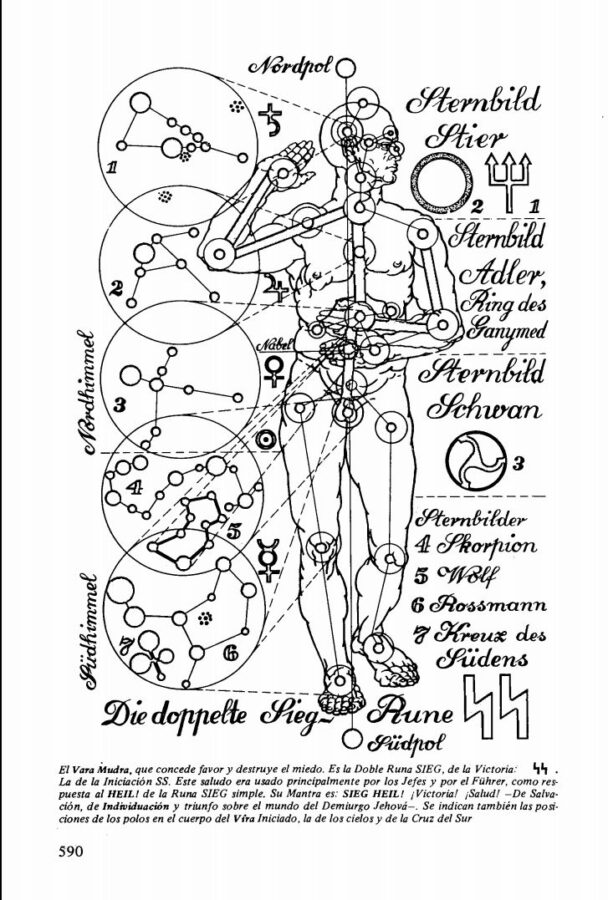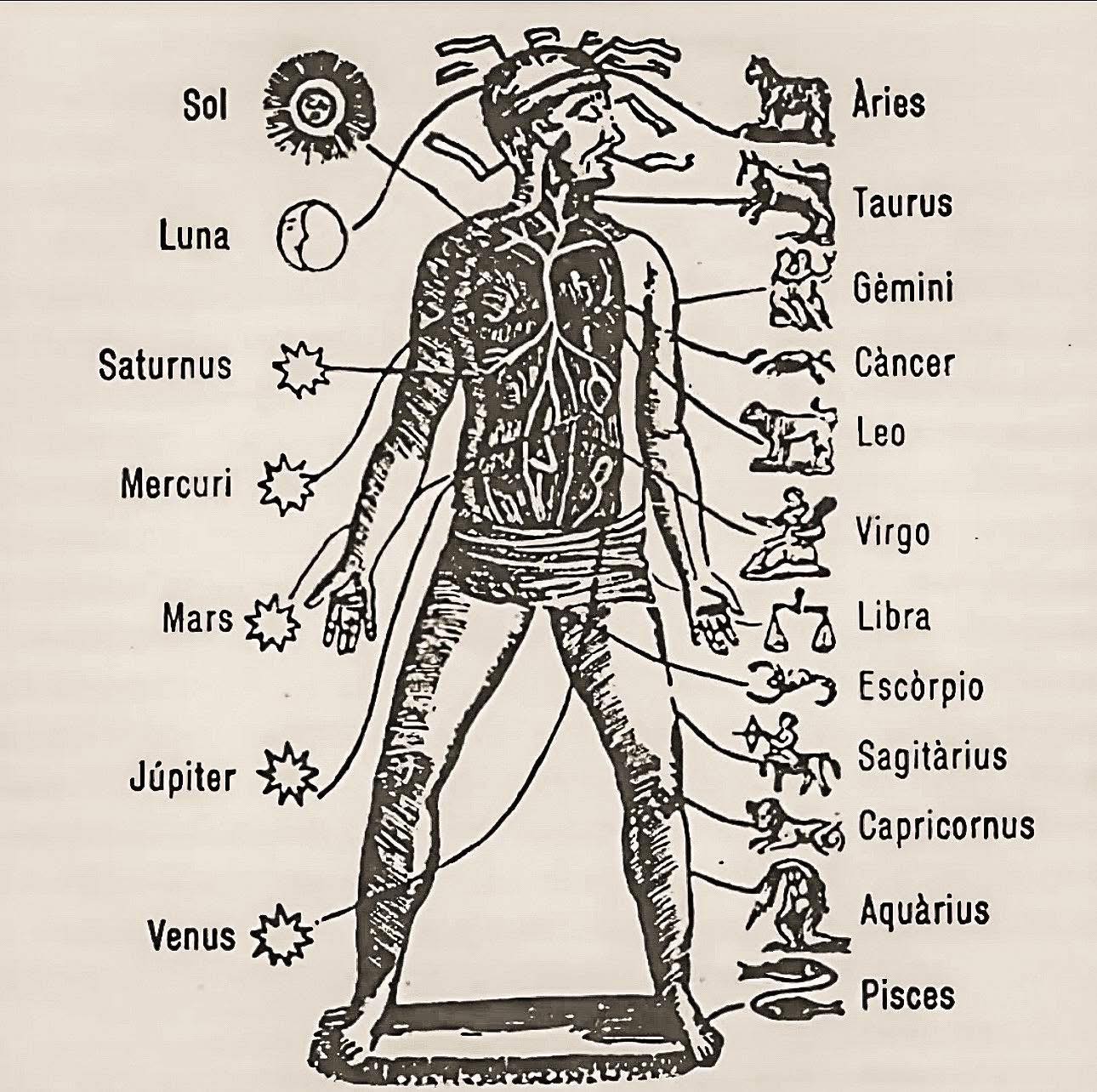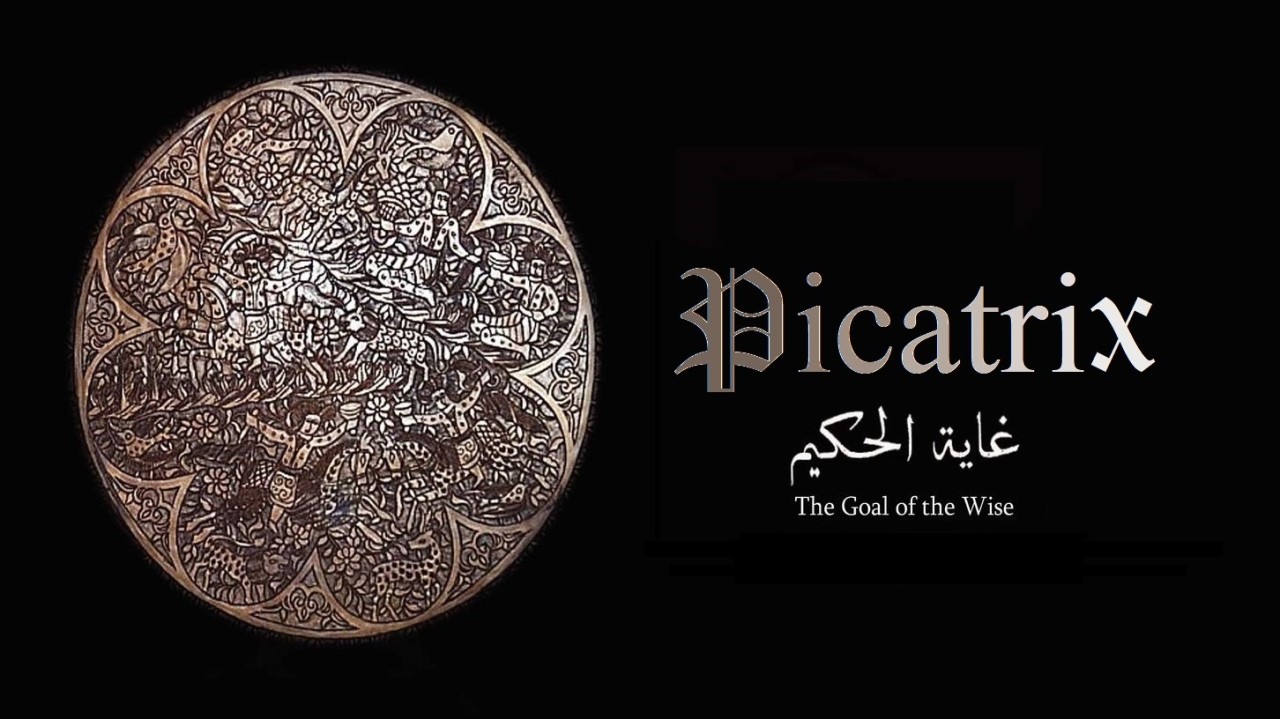‘Picatrix,’ also known as “Ghayat al-Hakim,” is a significant work that explores the essence of magic, astrology, and their intricate connections to the universe, human anatomy, and numerology. Its philosophy draws from diverse traditions including those of Aristotle, Plato, Pythagoras, Greeks, Persians, Indians, and Arabs.
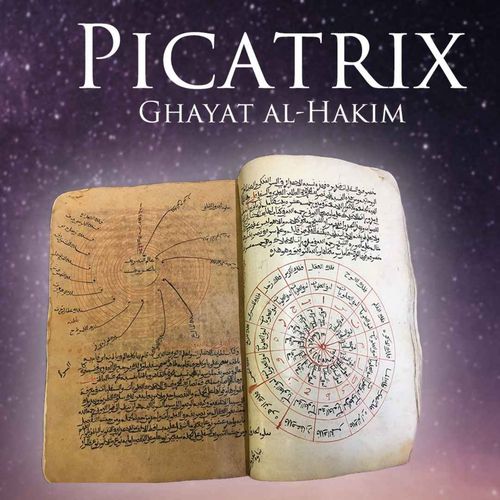
- Organs and Celestial Bodies:
- The human body possesses seven abdominal organs, which correspond to the seven moving planets. Similarly, the human body has seven influential forces stemming from the mind that promote well-being, analogous to these seven planets that control celestial laws and regulate all beings.
- The planets are believed to have spirits, bodies, and souls that influence metals, animals, and plants, just as the human body possesses physical forces supported by seven spiritual forces: the holder, puller, digester, pusher, nourisher, grower, and portrayer. These seven spiritual forces are considered similar to the seven planetary spirits and constitute the sensory forces that complete a human being.
- Skeletal and Circulatory Systems:
- The seven bones in the human head are equated with the seven days of the week.
- The 24 vertebrae in the back correspond to the 24 hours of the day and night.
- The 28 joints are linked to the number of lunar houses and alphabets.
- The number of intestines is said to be equal to the lunar phases.
- The human body’s 365 arteries and 365 veins remarkably correspond to the number of days and nights in a year and the number of celestial degrees.
- Body Openings and Constellations:
- The twelve holes in the human body are equivalent to the twelve constellations of the zodiac. Since there are six northern and six southern constellations, there are six holes on the left side and six on the right side of the body, mirroring this qualitative and quantitative arrangement.
- The joints, organs, and arteries of the body are explicitly stated to be similar to the celestial sphere, its constellations, parameters, phases, and angles.
II. Numerology and its Cosmic Significance Numbers hold profound spiritual and mystical significance in the traditions Picatrix draws upon, particularly the Kabbalah and Pythagorean philosophy.
- Fundamental Numbers:
- Seven: This is a peculiarly sacred number, denoting spiritual perfection and associated with the Holy Spirit’s work. It signifies time, as time has a sevenfold character. In Picatrix, the first book is divided into seven chapters because there are seven fast-moving planets. The seven planets are consistently linked to various aspects of the human body and cosmic forces.
Twelve: This number signifies governmental perfection or “rule”. It represents the twelve constellations in the world, the twelve months of the year, and the twelve primary organs or “leaders” in the human body. The Zodiac is divided into twelve signs, each corresponding to a specific part of the human body.
- Ten: This number includes all other numbers and is called the number of perfection. The Tree of Life, a core Kabbalistic concept, consists of ten Sephiroth (divine emanations). The ten Sephiroth are analogous to the ten fingers and toes of the human body.
- Three, Four, Five: These numbers are sacred and form the dimensions of the Pythagorean Triangle (3, 4, 5), where 5² = 3² + 4². The triangle can signify knowledge of the Holy Trinity or practice of virtues, contemplation, and spiritual knowledge. The number five relates to the fivefold division of the senses.
- Calculations and Divine Order: The total number of images that depict the controlling principle of celestial degrees is stated to be 10,006 by “The First Wise”. Picatrix also details calculations based on the 360 angles of the celestial sphere, showing the convergence of planets:
- 360 x 5 = 1,800 (three planets converge in one degree).
- 360 x 4 = 1,440 (four planets meet in one degree).
- 360 x 3 = 1,080 (five planets meet in one degree).
- 360 x 2 = 720 (six planets meet in one degree).
- 360 x 1 (seven planets meet in one degree).
III. Connections to Astrology, Astronomy, and Cosmology Picatrix views astrology as a profound science, essential for understanding and manipulating celestial influences through talismans.
- Celestial Images and Functions: The book delves into the 48 images appearing in constellations, which are described as imaginary figures drawn using fixed stars as reference points. These images produce “miraculous actions and effects”.
- Planetary Characteristics and Influences: Picatrix provides specific characteristics for the planets and their influences on Earth. For example:
- Saturn (h): moves cold and dryness.
- Jupiter (j): moves heat and humidity.
- Mars (e): moves heat and dryness.
- Venus (f): moves low heat and high humidity.
- Mercury (g): moves low heat and dryness.
- Moon (d): moves cold and humidity.
- The Sun (o) is portrayed as a crowned man on a carriage pulled by four horses, holding a mirror and shield, dressed in yellow.
- Venus (f) is symbolized by a woman holding an apple and a comb/board, or a naked woman with a child, or a woman riding a stag.
- Jupiter (j) is depicted as a man with a raven head holding a clay pot, or a crowned man riding a peacock.
- The Moon (d) is symbolized by a beautiful woman with a dragon belt.
- Talismans and Astrological Timing: The creation of talismans is deeply intertwined with astrological timings and planetary positions. Specific examples include:
- A scorpion image carved on a crystallite stone when Scorpio is ascendant saves a child from diseases if worn by a pregnant woman.
- A hand holding a scale carved on glass during the ascendant hour of Libra cures fevers.
- Talismans for judges can be made when Jupiter is connected to Saturn in Aries or Taurus, and the Moon is in the middle of the sky.
- Talismans for writers and ministers are made when the Moon is full and connected to Mercury in Aries or Virgo.
- Cosmological Structure: The text acknowledges that celestial orbital degrees are not “real” but are used for convenience and calculation, indicating a practical approach to astrological measurement despite underlying philosophical depths. The universe is considered the “body of Godhead,” with all things partaking in a transcendent consciousness.
- Astrology as a Science: Astrology was widely practiced in ancient nations and was considered the “mother of sciences” in Arabia. It influenced governance in China and was used for foretelling the future and understanding individual destiny based on stellar configurations at birth.
- Zodiacal Divisions: The zodiac is divided into 12 signs, which are further broken down into 36 Decans (10 degrees each) and then 72 Duodecans (5 degrees each). Each of these subdivisions is assigned a “celestial intelligence” or “angel” in the Qabbalistic system.
- Fixed and Movable Zodiacs: There are “two great zodiacs”—the fixed and the movable. The fixed zodiac represents the outermost walls of abstract space, while the movable zodiac is a band of “circumambulating so-called fixed stars” that embodies spiritual power.
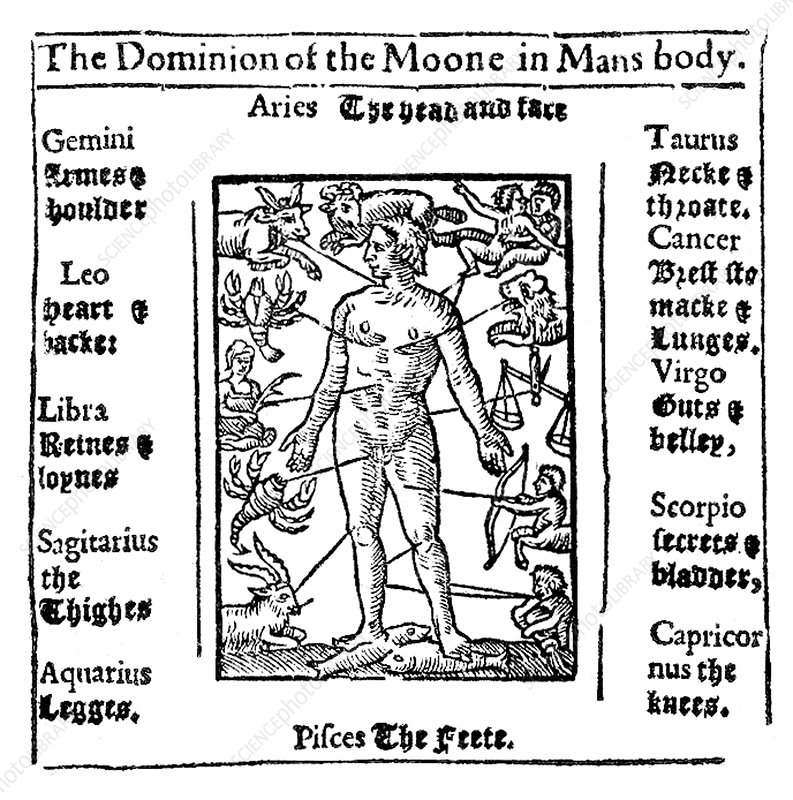
The rauens almanacke foretelling of a plague, famine, and ciuill warre. That shall happen this present yeare 1609. not only within this kingdome of great Britaine, but also in France, Germany, Spaine, and other parts of Christendome. With certaine remedies, rules and receipts, how to preuent, or at least to abate the edge of these vniuersall calamities. The figure of a man with the signs of the zodiac connected to their corresponding body parts. The zodiac was thought to exert influence over the body and was therefore consulted for propitious times to apply such remedies as bloodletting. Medical astrology (Iatromathematics) is an ancient medical system that associates various parts of the body, diseases, and drugs as under the influence of the sun, moon, and planets, along with the twelve astrological signs. Each of the astrological signs is associated with different parts of the human body.
- Philosophical Astronomy: Pythagorean astronomy focused not on the material constitution of heavenly bodies but on stars and planets as “focal points of Divine intelligence,” with physical astronomy being the “science of shadows” and philosophical astronomy the “science of realities”.
- Symbolism of Celestial Phenomena: The annual course of the sun and moon is represented by the flexuosity of entwined serpents in the Caduceus. The “celestial orbital degrees” are conceptual for calculation rather than physically real divisions. The Sphinx was invented as a memorial to indicate that the “Book written in the Heavens” (the Zodiac) begins with Virgo and ends with Leo, binding together the two ends of the celestial circle.
- Astrological Physiognomy: Dead Sea Scrolls fragments indicate the practice of “horoscopes” or astrological physiognomies, linking physical features and destiny to the configuration of stars at birth. These texts, like a “Zodiacal Calendar with a Brontologion,” predict events based on the moon’s passage through zodiacal signs.
Man is a microcosm of the macro universe; he is characterized by a dense body and an amiable spirit; one part is amiable and the other is dense; one part is alive and the other is dead; one half is moving and the other half is idle; one half is formed and the other is formless; one half is night-time and the other is daytime; one half is darkness and the other is light; one half is concealed, and the other is exposed; one half is tangible and the other is reasonable; one half is the sustainer and the other is the sustained. He shies away from shameful deeds and tolerates and does whatever he likes and regrets. His essence is composed of gentle as well as harsh characteristics; he possesses some of the harsh characteristics of earth, the gentle touch of air, the friendliness of fire and the coolness of water. Accordingly, he is moderate in his motion, which is the soul of life. By his motion he recognizes the heat of fire through its fiery power and the coolness of water through the inherent coolness of water and so on with the rest of the Elements.
Nonetheless, his head resembles the celestial sphere by its shape and roundness as well as by the good inlaid lights such as seeing, smelling, tasting and speaking. His eyes are similar to the O and the D, his nostrils to the two winds, his ears to the East and West, his front to the day and his back to the night, his walking to the motion of stars and his sitting to their being fixed, his retreat to their decline and his death to their burning. His abdominal organs are seven equal to the number of the moving planets. He has seven bones in his head equal to the number of days in the week, 24 vertebras in his back equal to the number of hours of the day and night, and 28 joints equal to the number of the houses of the D and the number of the alphabets. The number of his intestines are equal to the lunar phases, and the number of arteries are 365 with an equal number of veins, and that is equal to the number of days and nights of the year, as well as to the number of the celestial degrees. The number of his different characteristics are equal to the number of changes in the time of the year.
His eyes are his spies with speaking power resembling a king. His ears are his informants; his tongue is his translator; his heart is his divan of knowledge; his stomach is his treasury; his gall bladder is the source of his patience so that his flesh will not rupture. It is the bond and treatment of the body. His lungs are his fan; the hands are his guards and his legs are his vehicle. His flesh is equivalent to earth; his bones are like mountains; his hair is like plants; his arteries are like medicine, and his abdominal organs are like metals.
His body consists of nine jewels built on nine circles inside one another. The outer circle encompasses the flesh, the bones, the muscles, the nerves, the brain, the skin and the nails. The brain fills the cavity of the bones. Its function is to maintain energy and flexibility of bones. The function of bones is to hold and stabilize the flesh around them. The function of the muscles is to tie up joints and move organs. The function of the flesh is to seal the defects in the body and protect the bones from fracturing and dislocation. The function of arteries is to deliver blood to various parts of the body. The function of the blood is to regulate the temperature of the body, maintain life, adjust temperament and generate motion. The function of the skin is to guide the extremities, hold them and bundle them to protect them from splitting and scattering.
The body has twelve holes equivalent to the number of constellations. Since there are six northern constellations and six southern constellations, there are six holes in the body on the left side and six on the right side similar to the arrangement of the constellations qualitatively and quantitatively. Also, the seven moving planets which control the laws of the celestial bodies affecting and regulating all beings, are similar to the human body which has seven influential forces stemming from the human mind to promote the well-being of the body. Additionally, these planets, which have spirits, bodies and souls acting upon and influencing metals, animals and plants, are similar to the human body which possesses physical forces to help maintain and promote the well-being of the body through seven other spiritual forces. These seven spiritual forces are: the holder, the puller, the digester, the pusher, the nourisher, the grower and the portrayer.
| Zodiac Sign | Body Part(s) | Planetary Ruler (Traditional) | Source / Author | Date |
|---|---|---|---|---|
| Aries | Head, brain | Mars | Manilius, Astronomica | ~1st century CE |
| Taurus | Neck, throat, vocal cords | Venus | Ptolemy, Tetrabiblos | ~2nd century CE |
| Gemini | Arms, shoulders, lungs | Mercury | Manilius, Astronomica | ~1st century CE |
| Cancer | Chest, breasts, stomach | Moon | Ptolemy, Tetrabiblos | ~2nd century CE |
| Leo | Heart, spine, upper back | Sun | Agrippa, Three Books of Occult Philosophy | 1533 |
| Virgo | Abdomen, intestines, digestion | Mercury | Manilius, Astronomica | ~1st century CE |
| Libra | Kidneys, lower back | Venus | Ptolemy, Tetrabiblos | ~2nd century CE |
| Scorpio | Reproductive organs, genitals | Mars (co-ruled Pluto, modern) | Agrippa, Three Books of Occult Philosophy | 1533 |
| Sagittarius | Hips, thighs, sciatic nerve | Jupiter | Manilius, Astronomica | ~1st century CE |
| Capricorn | Knees, bones, skin | Saturn | Ptolemy, Tetrabiblos | ~2nd century CE |
| Aquarius | Ankles, calves, circulation | Saturn (co-ruled Uranus, modern) | Manilius, Astronomica | ~1st century CE |
| Pisces | Feet | Jupiter (traditional), Neptune (modern) | Ptolemy, Tetrabiblos | ~2nd century CE |
Books:
Medical Astrology by Däath, Heinrich 1907
Picatrix 11th Cent.
Thanks for reading. I’ve created an esoteric library you should check out. Tens of thousands of PDF books on all sorts of topics. It’s all free.
“I tell you in every truth, Man is the Son of the Earthly Mother, and from her did the Son of Man receive his whole body, even as the body of the newborn babe is born of the womb of his mother. I tell you truly, you are one with the Earthly Mother; she is in you, and you in her. Of her were you born, in her do you live, and to her shall you return again. Keep, therefore, her laws, for none can live long, neither be happy, but he who honours his Earthly Mother and does her laws. For your breath is her breath; your blood her blood; your bone her bone; your flesh her flesh; your bowels her bowels; your eyes and your ears are her eyes and her ears.”
Discover more from JoeDubs
Subscribe to get the latest posts sent to your email.
